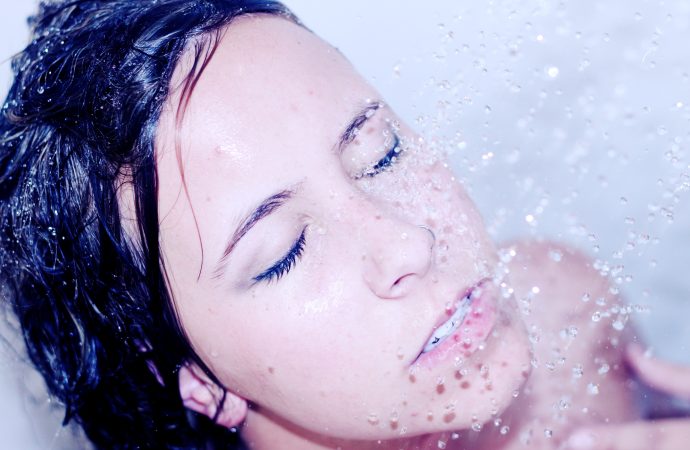Introduction: Hair shedding is a natural process that occurs as part of the hair growth cycle. While it’s normal to lose some hair during your daily wash, it’s important to understand the difference between normal shedding and excessive hair loss. In this article, we’ll explore the truth about shedding and help you understand hair loss
Introduction:
Hair shedding is a natural process that occurs as part of the hair growth cycle. While it’s normal to lose some hair during your daily wash, it’s important to understand the difference between normal shedding and excessive hair loss. In this article, we’ll explore the truth about shedding and help you understand hair loss during your daily wash, including what causes it, when to be concerned, and how to promote healthy hair growth.
1. Understanding the Hair Growth Cycle:
Hair goes through a continuous cycle of growth, rest, and shedding. The anagen phase is the growth phase, during which hair actively grows. This phase can last for several years. The catagen phase is a transitional phase, lasting a few weeks, where hair growth slows down. The telogen phase is the resting phase, lasting a few months, during which the hair follicle is dormant before shedding the old hair and regrowing a new one. It’s important to note that each hair strand goes through these phases independently.
2. Normal Hair Shedding:
Normal hair shedding during your daily wash typically ranges from 50 to 100 strands. These are hairs in the telogen phase that are ready to shed and make way for new growth. Seeing a few strands in your hands or on the shower floor is not a cause for concern as it’s a natural part of the hair growth cycle. It’s important to remember that not all hairs shed at the same time, so the shedding is often spread out over multiple washes.
3. Causes of Excessive Hair Loss:
Excessive hair loss during your daily wash could be a sign of an underlying issue. Several factors can contribute to excessive shedding, including:
– Hormonal changes: Hormonal imbalances due to pregnancy, childbirth, menopause, or thyroid disorders can disrupt the hair growth cycle and lead to increased hair shedding.
– Nutritional deficiencies: Inadequate intake of essential nutrients, such as iron, vitamins (particularly vitamin D and B vitamins), and protein, can impact hair health and result in excessive shedding.
– Stress: Physical or emotional stress can cause a condition called telogen effluvium, where a significant number of hair follicles prematurely enter the telogen phase, leading to increased shedding.
– Medical conditions: Certain medical conditions like alopecia areata, scalp infections, and autoimmune disorders can cause hair loss.
4. When to Be Concerned:
While some hair shedding is normal, certain signs indicate that you should be concerned about excessive hair loss:
– Large clumps of hair coming out during your daily wash.
– Noticeable thinning of the hair or widening of the part.
– Receding hairline or bald patches.
– Excessive shedding persisting for more than a few weeks.
– Hair loss accompanied by itching, redness, or scalp tenderness.
If you experience any of these signs, it’s advisable to consult a dermatologist or healthcare professional for an evaluation to determine the underlying cause of your hair loss.
5. Promoting Healthy Hair Growth:
To promote healthy hair growth and minimize excessive shedding, consider the following tips:
– Maintain a balanced diet: Ensure you’re consuming a variety of nutrients, including iron, vitamins, and protein, to support hair health.
– Practice stress management: Incorporate stress-reducing activities into your routine, such as exercise, meditation, or relaxation techniques.
– Handle hair gently: Avoid harsh brushing or pulling, and use wide-toothed combs or brushes with soft bristles to minimize hair breakage.
– Avoid excessive heat and styling: Limit the use of hot tools, such as flat irons and curling irons, and minimize hairstyles that tug or pull on the hair.
– Seek professional guidance: If you’re concerned about your hair loss, seek the advice of a dermatologist or trichologist who
specializes in hair and scalp health.
Conclusion:
Understanding the truth about shedding during your daily hair wash is crucial for distinguishing between normal shedding and excessive hair loss. While losing some hair strands is a natural part of the hair growth cycle, excessive shedding can be a sign of an underlying issue. Pay attention to any significant changes in your hair loss patterns and be aware of the signs that warrant concern. By maintaining a healthy lifestyle, managing stress, and seeking professional guidance when needed, you can promote healthy hair growth and maintain a vibrant and luscious mane.

















Leave a Comment
Your email address will not be published. Required fields are marked with *